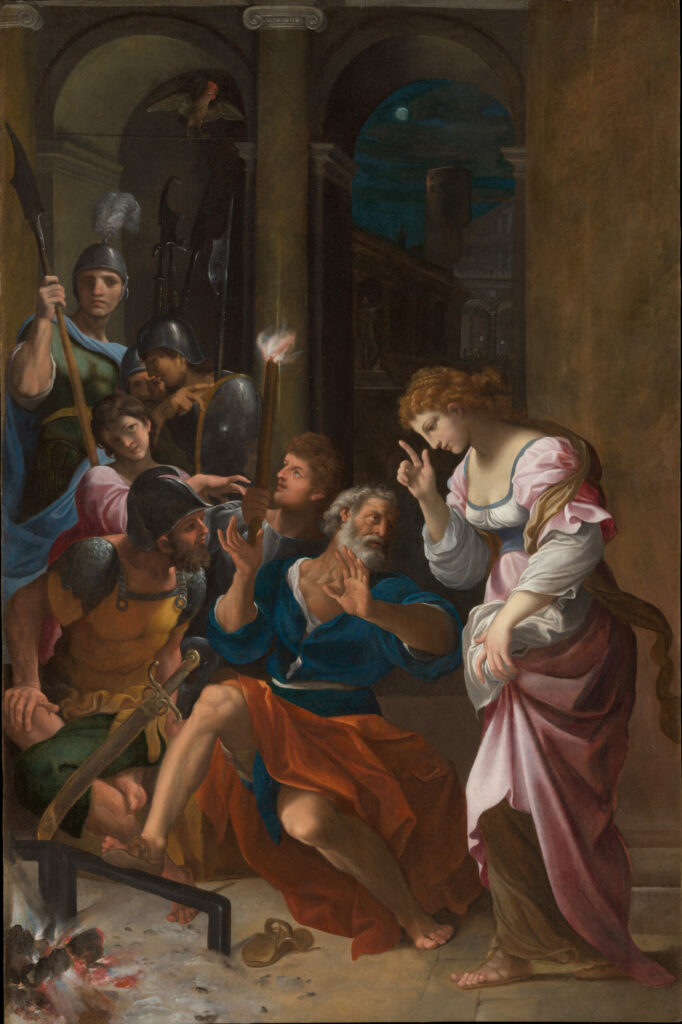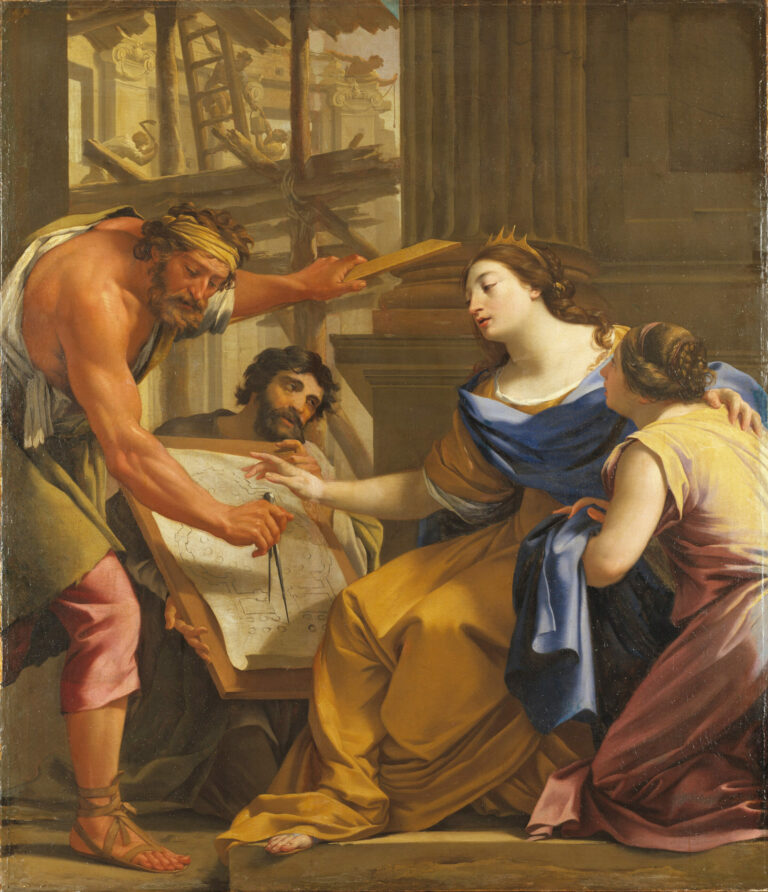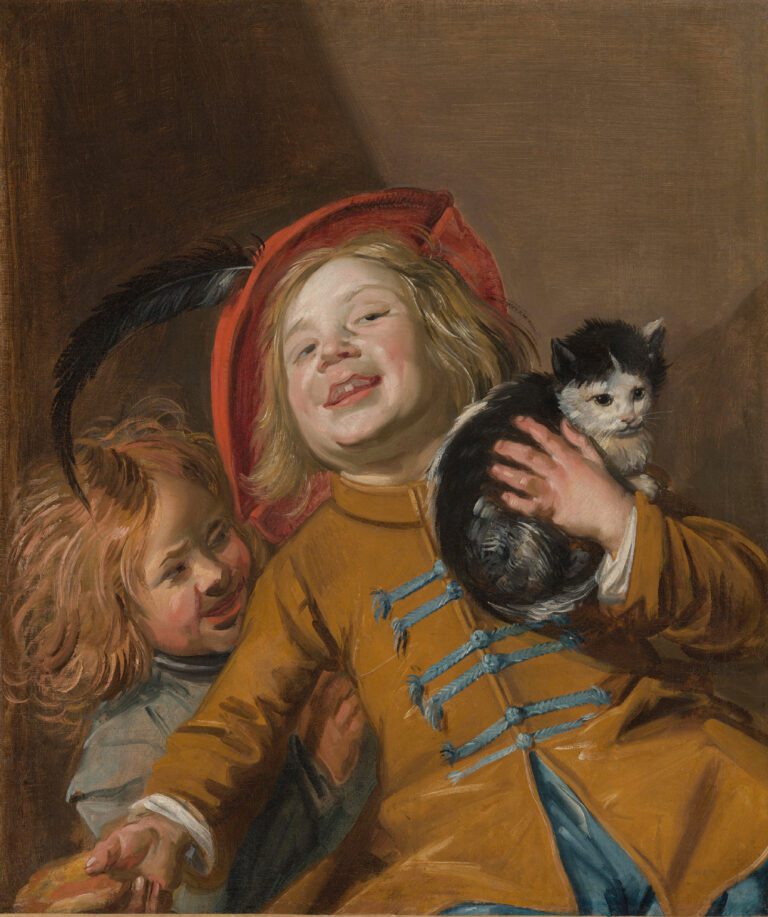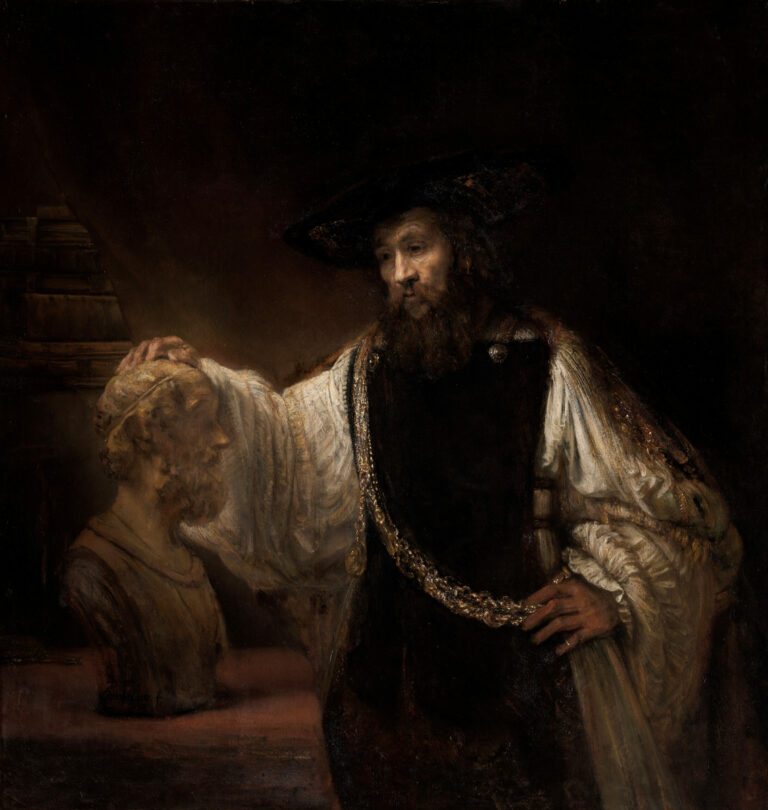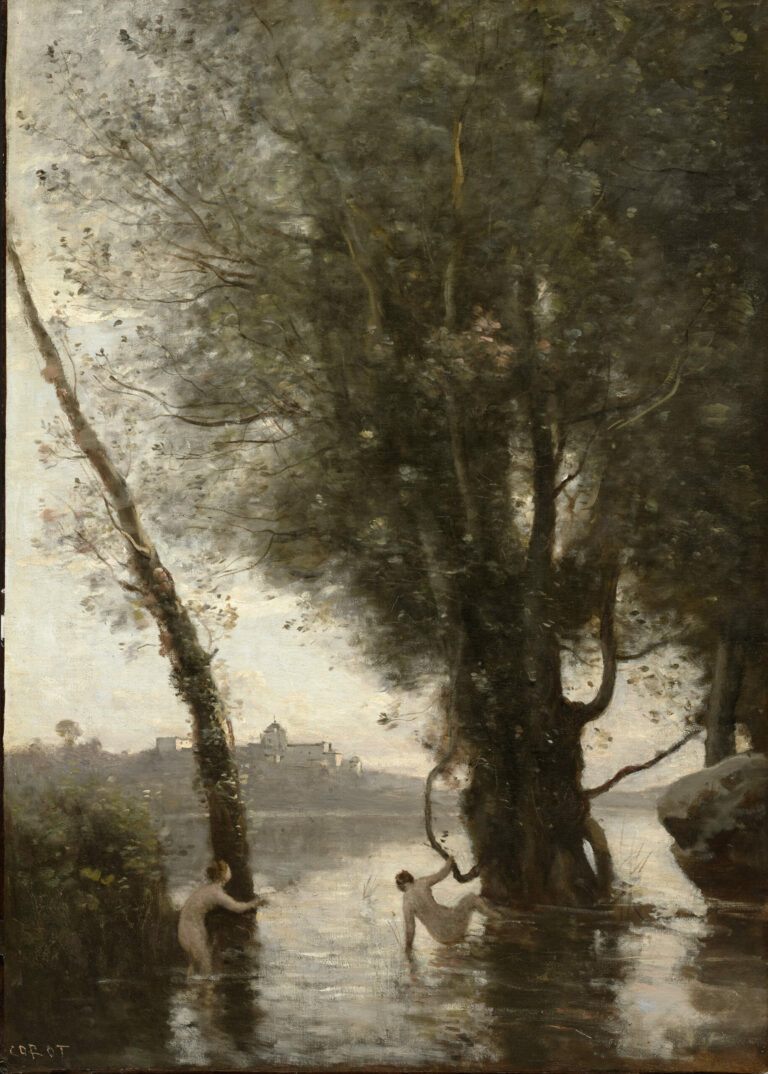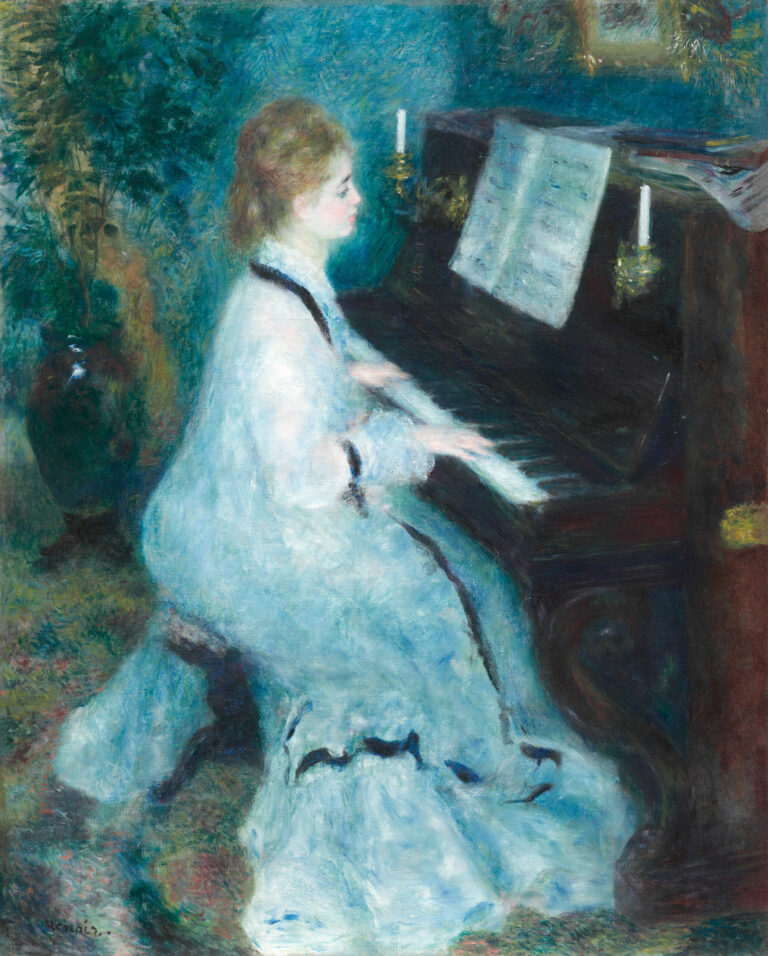The Denial of Saint Peter masterfully illustrates the mature art of Ludovico Carracci, an original synthesis between classical tradition and Baroque innovation.
This dramatic composition unfolds a crucial episode of the Passion within a sophisticated architectural setting, where the artist virtuosically orchestrates bold perspective effects. Saint Peter occupies the center of a theatricalized scene where menacing Roman soldiers mingle with curious witnesses. Carracci’s originality lies in the fusion between idealized forms of ancient inspiration—simplified faces, sculptural drapery—and striking naturalism: dancing flames from the brazier, metallic reflections on armor, a sandal abandoned on the ground. The interplay of light and shadow reinforces the psychological intensity. This work testifies to the maturity of a master who knew how to reconcile classical heritage with expressive modernity.
Further information
- The Denial of Saint Peter, by Ludovico Carracci, circa 1616
- 171.8 × 116 cm (67 5/8 × 45 11/16 in.), oil on canvas
- The Metropolitan Museum of Art, Fifth Avenue, New York, displayed in gallery 620
- https://www.metmuseum.org/art/collection/search/438561
Ludovico Carracci (1555-1619), Italian pre-Baroque painter, engraver and printmaker, patriarch of the Bolognese artistic dynasty and visionary co-founder of the Accademia degli Incamminati with his cousins Annibale and Agostino, profoundly revolutionized Italian painting of the late 16th century. Both theorist and practitioner, he advocated a return to study from nature against Mannerist excesses, forging an innovative aesthetic that combined Florentine drawing rigor, Venetian colorito, and expressive truth. An accomplished master of all genres, he trained an entire generation of artists in his legendary workshop. His considerable influence on European art definitively opened the path to grand Baroque classicism and made Bologna the artistic laboratory of modern Europe.

